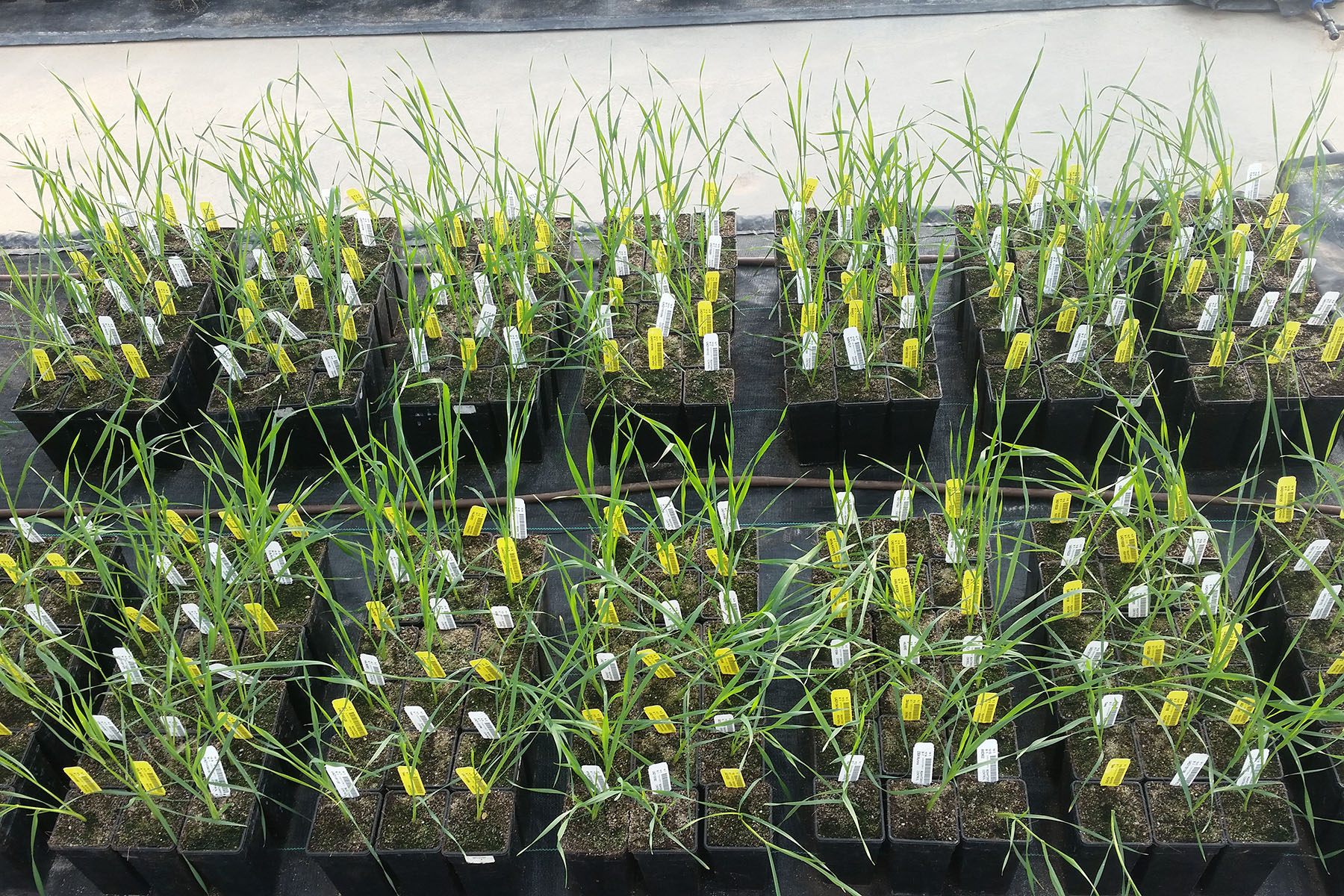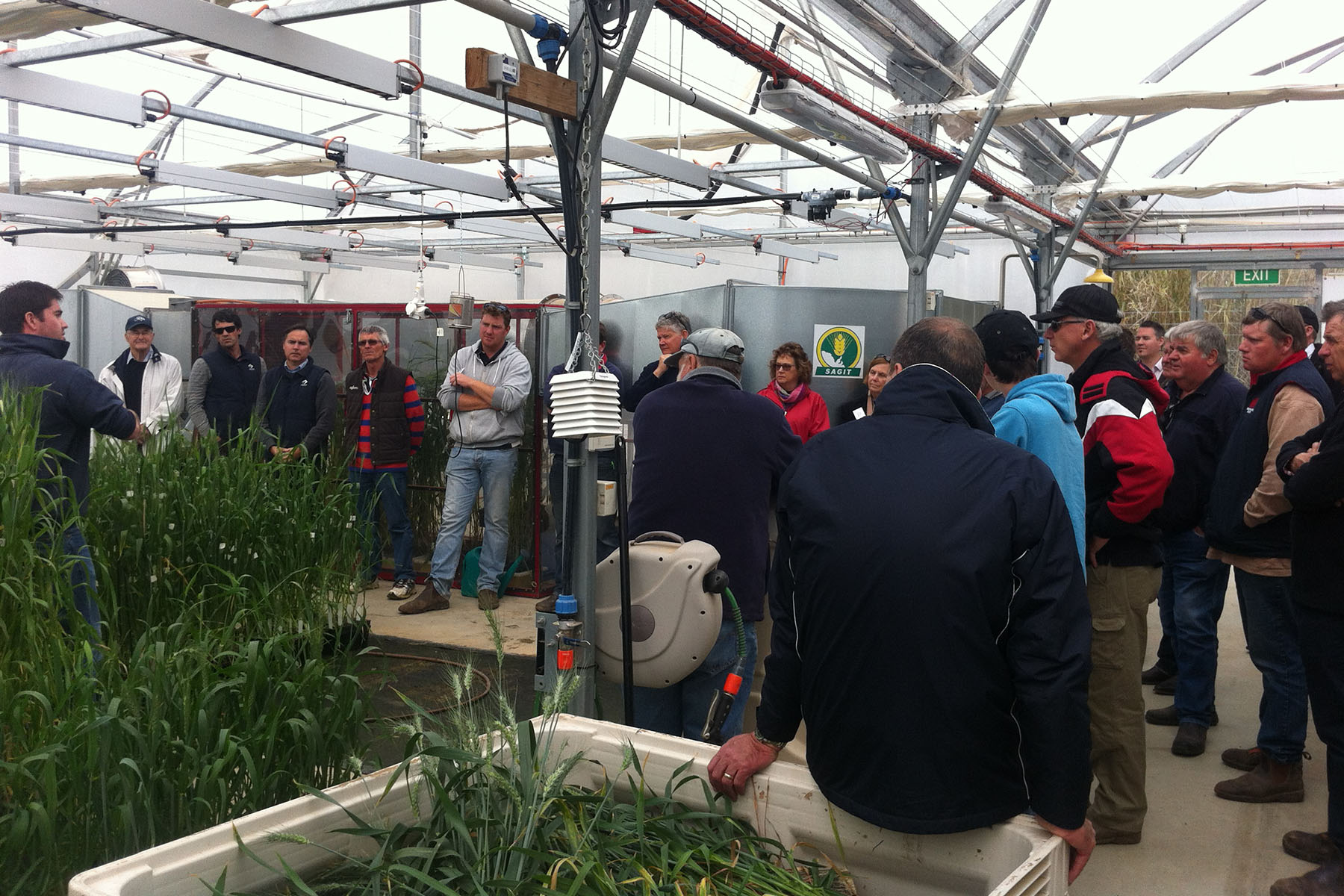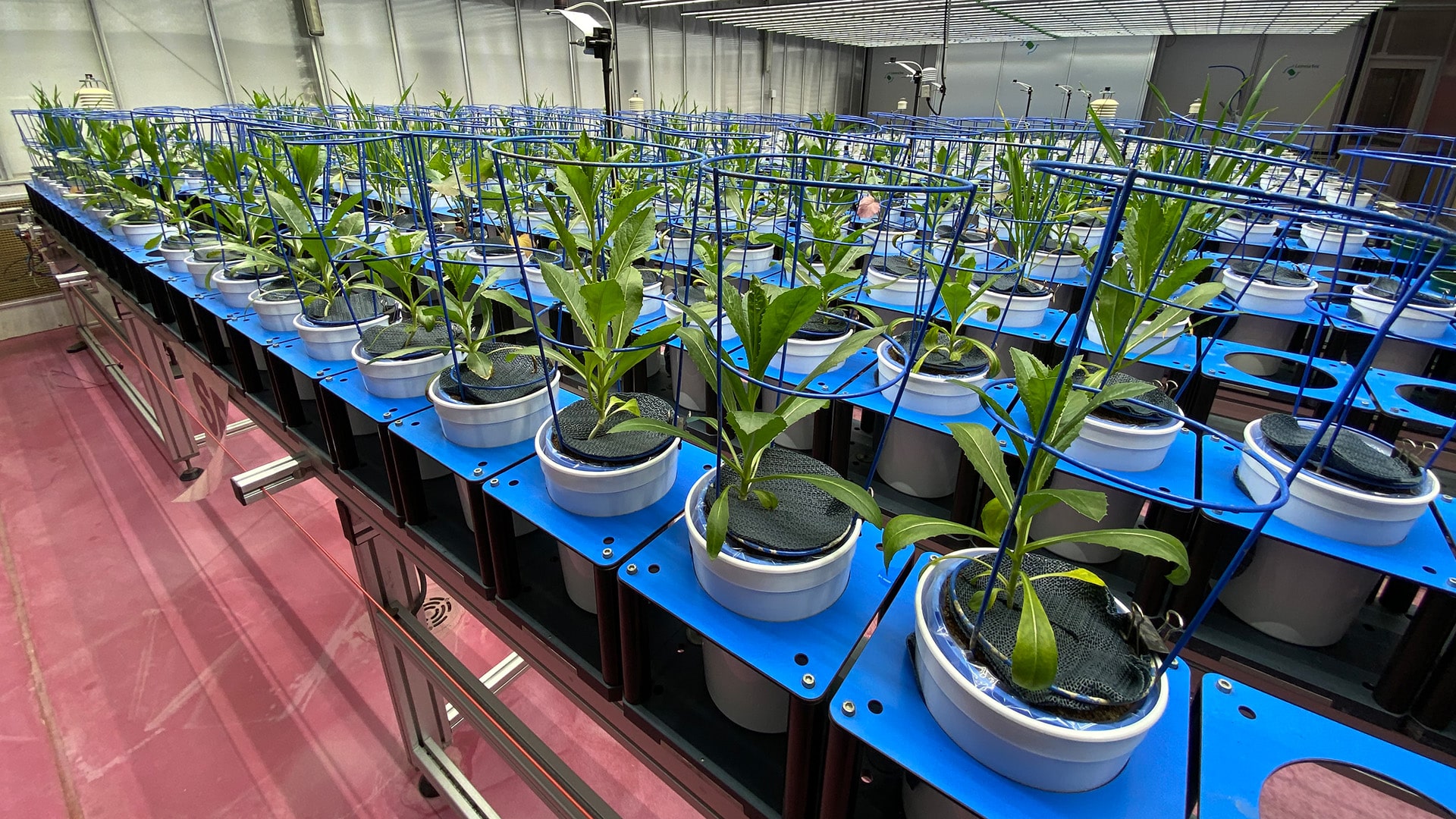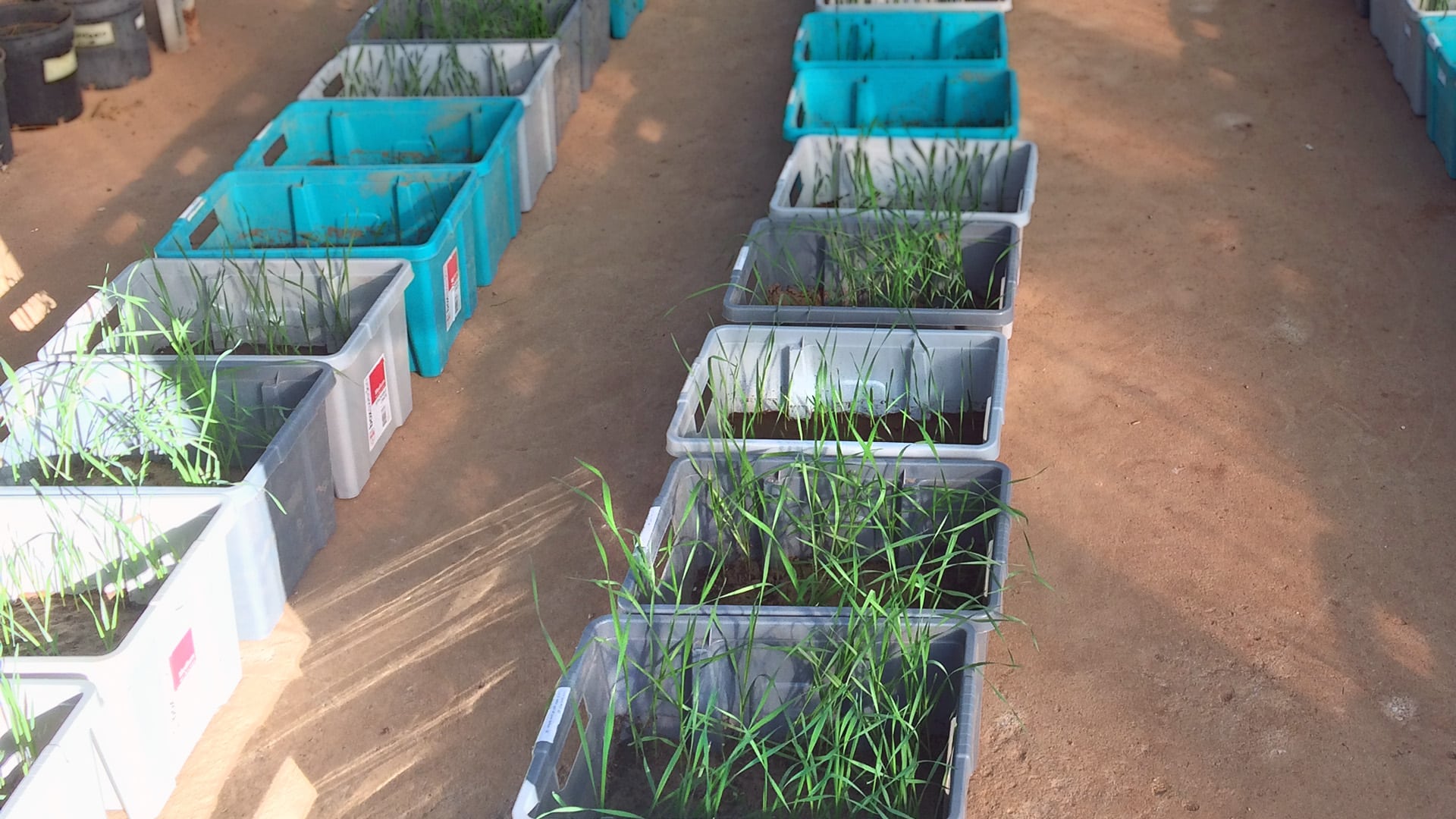START
FINISH

Summary
The SAGIT-AGT heat stress chamber was used to study the heat stress tolerance of 31 durum breeding lines, along with commercial durum varieties and bread wheats for comparison.
The trial identified suitable parents for future breeding, which may lead to the development of new heat tolerant durum varieties 8-10 years from now.
Background
Heat stress has large implications on cereal production in South Australia with stressful temperatures during spring having large negative impacts on the grain yields achieved by producers.
Research Aims
The core objectives of the project were to:
• Screen selected entries from Durum Breeding Australia’s (DBA) Southern Node Breeding Program against leading bread wheat varieties in heat stress trials;
• Evaluate the relative heat stress tolerance of the selected durum entries to the benchmark bread wheat varieties;
• Identify elite heat stress tolerant durum parents for further exploitation through breeding; and
• Disseminate the heat chamber trial results by updating growers at forums and field day events.
In The Field
The project team selected 31 durum lines from Durum Breeding Australia’s Southern Program, along with seven commercial durum varieties and two bread wheat varieties and subjected to a split-plot replicated trial.
Single seeds were planted in 10cm x 10cm x 18 cm pots, irrigated and supplied with nutrition until anthesis. Ten days after the end of anthesis, plants were subject to 36 degrees Celsius with 40 kilometre per hour wind speeds for three days in the AGT-SAGIT heat chamber.
At maturity, the plants were harvested and statistical analysis performed on a range of measures of plant health and grain yield.
Results
Significant differences in heat stress tolerance were identified between genotypes and the results from both years (2015 and 2016) resulted in the identification of some potential heat tolerant germplasm.
DBA-Aurora recorded a loss of 22 per cent Thousand Grain Weight (TGW), an indicator of plant yield, after heat stress, and several breeding lines gave better heat stress tolerance. By contrast, older varieties showed far lower heat stress tolerance, for example Tamaroi recorded a TGW loss of 49 per cent when exposed to stress. The heat tolerant bread wheat variety, Halberd, recorded a TGW loss of 13 per cent.
The Southern Australia Durum Growers Association visited the heat chamber trial as part of their annual crop walks. On both occasions there was excellent attendance at the field event with 50 growers and sponsors in 2015 and 30 growers and sponsors in 2016.
Project Participants
University of Adelaide: Jason Able
Australian Grain Technologies: Paul Telfer
The Problem
Heat stress causes significant losses for South Australian durum growers.
The research
A range of durum varieties and breeding genotypes were tested in a heat chamber to identify suitable parents for future breeding. The SAGIT-AGT heat stress chamber was used to study the heat stress tolerance of 31 durum breeding lines, along with commercial durum varieties and bread wheats for comparison.
More information
Jason Able, University of Adelaide
T: 08 8313 7075
E: [email protected]
Value for Growers
The research findings from this project will play an important role in selecting suitable parental combinations for future crossing blocks, which may lead to the development of new heat tolerant durum varieties 8-10 years from now.




